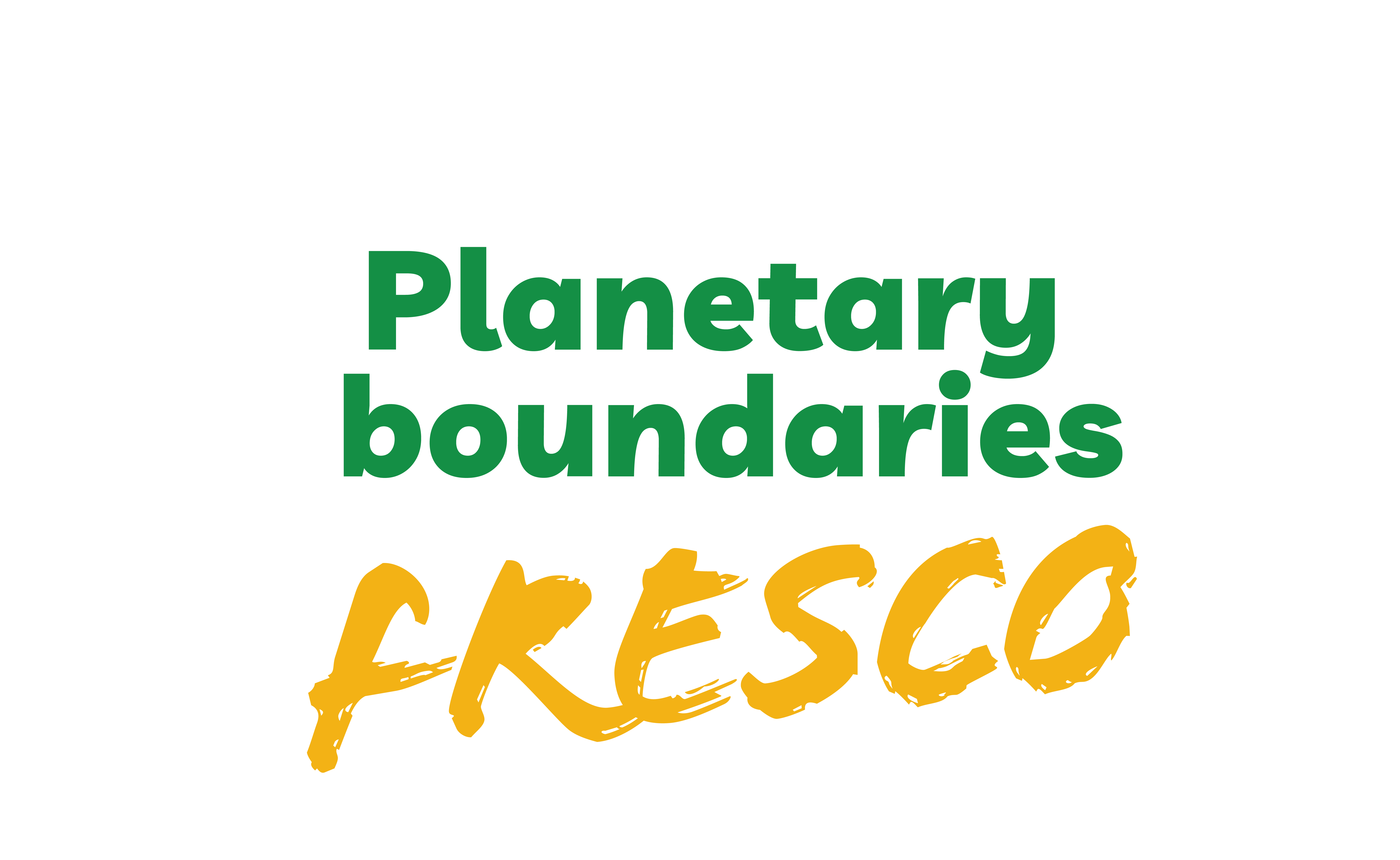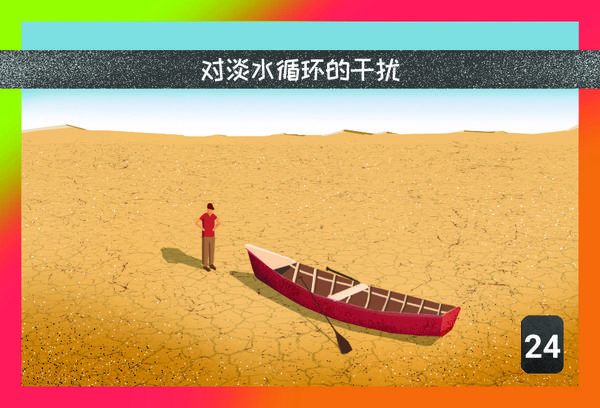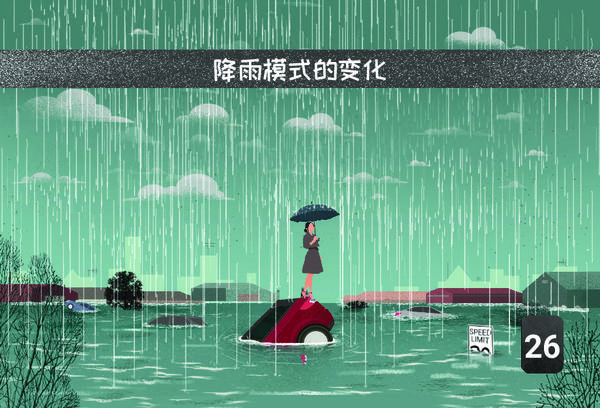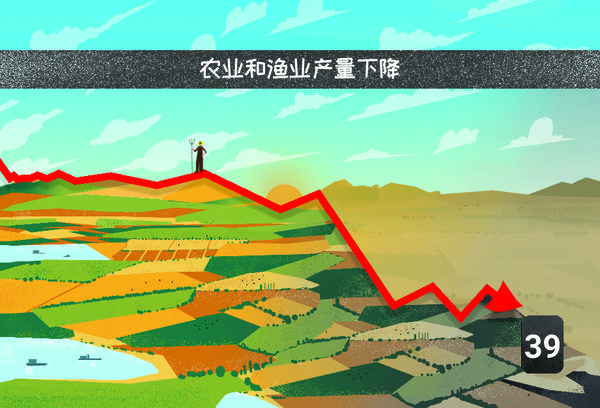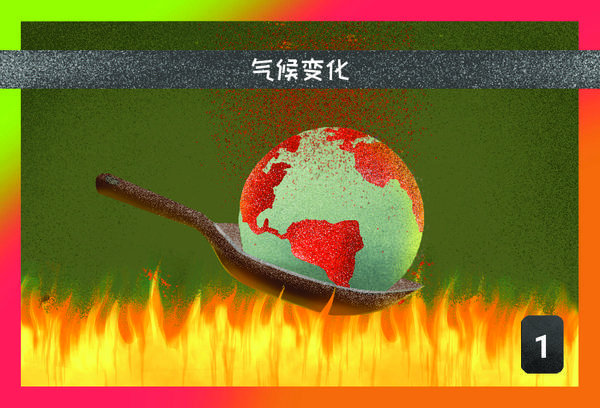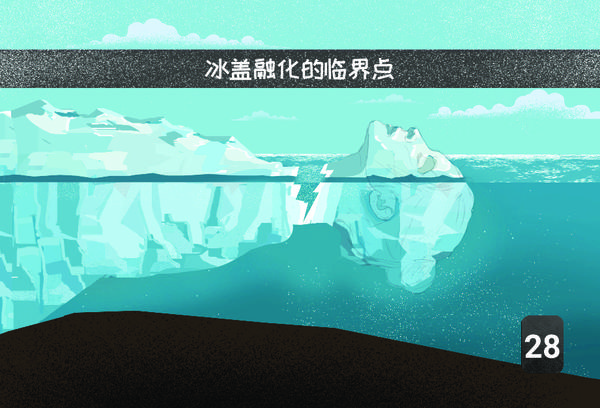30 - Impacts on freshwater resources
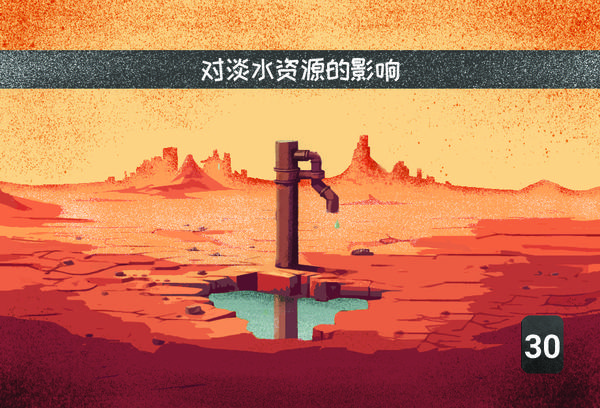
✏️ This explanation does not yet exist in your language… Just click here or send an email to fdn.memo@marc-antoinea.fr and suggest your translation!
Fresh water represents only 3% of the total volume of water on earth. Distribution of this fresh water: rivers / rivers / lakes (1%), basements (24%) and ice (75%).
2Causes
The great water cycle feeds, among other things, rivers and groundwater. A disrupted water cycle distributed differently geographically has impacts on the availability of fresh water in certain regions.
Fresh water resources depend partly on rainfall. Less rain can therefore lead to less fresh water resources in certain regions.
3Consequences
Tensions over freshwater resources, aggravated by climate change, can have an impact on armed conflict, as water is a vital resource whose scarcity or mismanagement exacerbates rivalries between groups, regions or countries. Here are some of the reasons why: Vital dependence on water: Fresh water is essential for survival (drinking), agriculture (irrigation) and industry. When it becomes scarce due to drought, over-consumption or pollution, the populations or states that depend on it may resort to violence to secure their access, especially in arid regions such as the Middle East or the Sahel.
Unequal sharing of cross-border resources: Many rivers and aquifers cross several countries (e.g. the Nile, Euphrates, Jordan). If an upstream country builds a dam or diverts water, those downstream, deprived of their share, may perceive this as aggression. For example, tensions between Ethiopia (Nile dam) and Egypt have already led to threats of conflict.
Increased local competition: On a regional scale, farmers, herders and city dwellers compete for available water. In Nigeria, for example, conflicts between nomadic herders and farmers intensify when water points dry up, sometimes degenerating into armed violence between communities.
3Other possible causes
Via the melting of glaciers (otherwise it is largely via the modification of the rain regime)
If we consider that this map also includes glaciers, then there is indeed an impact on fresh water resources: the glaciers of the Hindu Kush and the Himalayas provide drinking water to 250 million people spread across 8 country of the world. By 2100, more than 2/3 of them could have melted, which will cause floods and then shortages of fresh water: the large rivers such as the Huang Hue (Yellow River), the Yangtze, the Brahmaputra, 'Indus and the Ganges will no longer carry much water in summer, which supply Bangladesh, Pakistan and northern India.
Rising sea levels significantly impact freshwater resources through saltwater intrusion into coastal aquifers, lakes and river systems. That salt contamination of freshwater sources and land is a major issue for ecosystems, agricultural land and the roughly 15% of the world’s population that reside in coastal zones!
